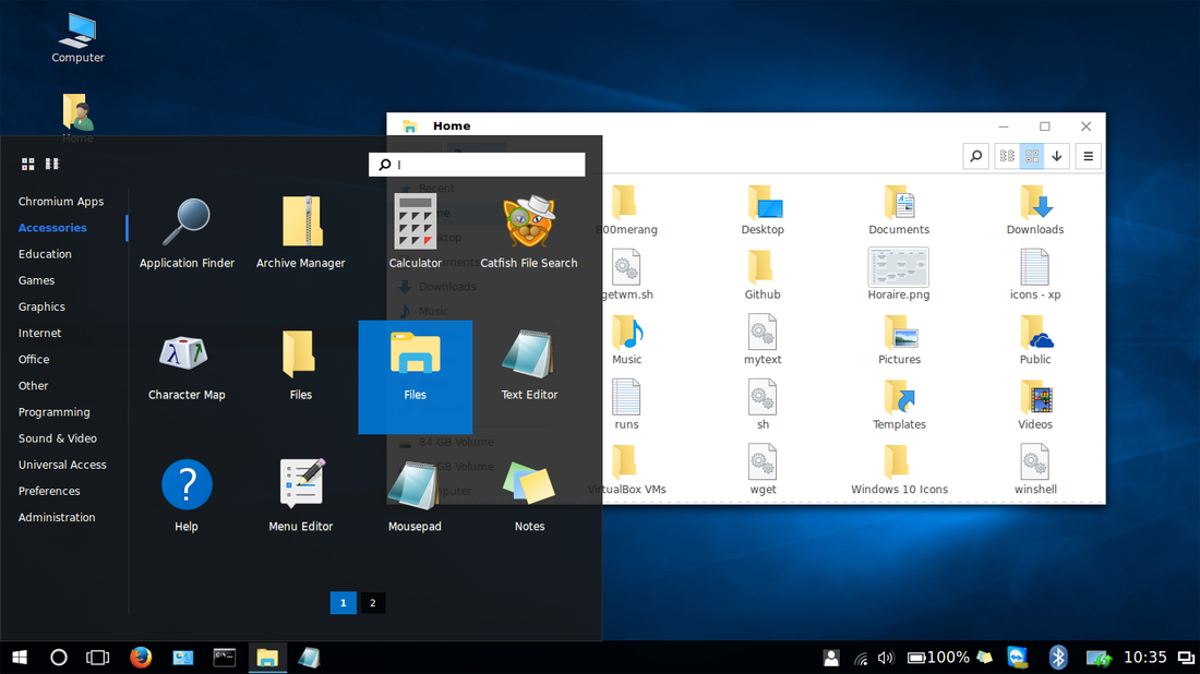

There’s no doubt that elementary OS was initially inspired by macOS. Note: The list is in no particular order of ranking. While there can be several Linux distributions that offer you a similar UI to macOS, we stick to the ones that are actively maintained along with new offerings. You can set this up in the Exposé configuration panel by clicking on the 'Expo edge' option and changing it to the corner you find easiest to use.Linux Distributions That are Inspired by the Looks of MacOS You can find this listed as 'Expo' under the 'Desktop' category.īy default, pressing followed by enables the Exposé mode, but as with OS X, you can also activate Expose by moving the cursor into a corner of the display. You can then select the desktop to return to. This effect will zoom out of all your virtual desktops to give you a panoramic overview of what's on them. You can use the Compiz Config Setting Manager to change the transition effects for virtual desktops, but you can also use it to add other OS X desktop modes like Exposé. These shortcuts are very close to the OS X equivalent.
#How to make your windows look like mac on linux plus
We recommend plus the cursors for navigating between desktops, and plus a number for switching to a desktop directly. This will let you assign keys to the virtual desktop transitions just as you can with OS X. To complete this experience, open the Keyboard Shortcuts panel from the launch menu. Once you've added this, you'll be able to switch between four virtual desktops by clicking on their quadrants in this applet. The latter can be added by right-clicking the panel, selecting the 'Add to panel' option and looking for the workspace switcher. Mint even pre-configures Compiz to use the same virtual desktop transitions as OS X spaces, but you can't see this because neither are keyboard shortcuts nor the panel applet to make the desktops visible enabled. In the past it was used to make wobbly windows and desktop cubes, but has since matured into a neat accelerated layer for graphical frippery. Compiz is the graphics effects layer for the desktop. One of Mint's best features is also one that will make a few more of OS X's features easier to achieve, and that's Compiz.

You can also change its transparency to an OS X equivalent using the slider on the same window, but this is slightly problematic because not all of the widgets within the panel become transparent. You can move this easily by right-clicking on a blank section of the panel, selecting the 'Properties' menu option and in the window that appears, changing 'Bottom' in the Orientation field to 'Top'. This resides on the lower border of the screen, whereas the OS X equivalent sits on the top border, much like older versions of Ubuntu. You might want to move the default Mint panel, for instance.
/cdn.vox-cdn.com/uploads/chorus_image/image/67126142/88612692_a1d81a00_d040_11ea_85c9_c64142c503d5.0.jpg)
The OS X desktop also behaves differently from Mint's, especially if you're a power user. You can change the icons via the Appearance panel, which can be found by clicking 'Control centre' in the launch menu. There are lots to choose from, but we've found that the 'Elementary' set, which can be installed from the Synaptic Package Manager, to be a good match.ĭon't select the Mint-specific variety, because these have been changed to the official Mint colours. If you've gone for a space-type background, you'll notice that this doesn't sit particularly well with the green of the default icons, so your next task will be to change them. Alternatively, choose the 'Colours' background type, change it to a vertical gradient, and make the two colours purple and black. You might even want to hunt around online, because the default selection that comes with Mint keeps to the house colours of green, green and green. The latest version of Mint has a bright, light grey background and window decorations.Ĭhanging the desktop background is easy – just right-click it, select 'Change desktop background' and choose an image you prefer. The first are the colour and theme, because they look nothing like OS X. With a mind to making the Mint desktop more like OS X, there are a few obvious targets.


 0 kommentar(er)
0 kommentar(er)
